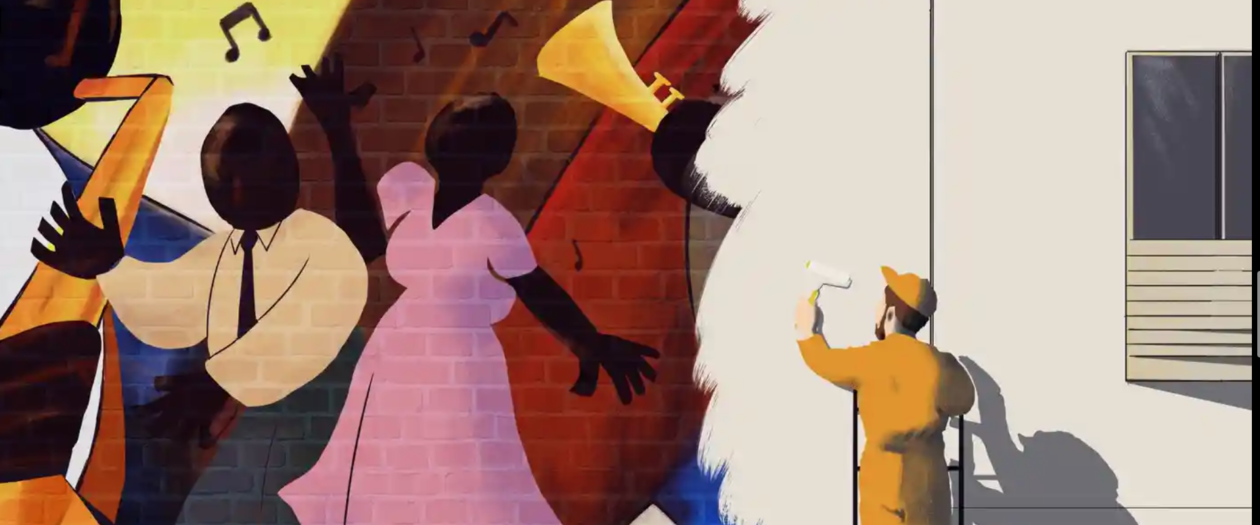Momina Ahmed and Shah Alom are students who attend college in New York city and are residents living in East Harlem. Our purpose of conducting interviews with Momina Ahmed and Shah Alom was to understand their perspective with residential gentrification and its effects on their neighborhood. We also asked their views of how they believe other residents of Harlem are being affected by the gentrification in the community.
SA: How long have you been a resident of Harlem?
MA: I have been living in Harlem for 10 years.
SA: I moved to Harlem 10 years ago, I have been living here since.
MB: Have you observed changes that have impacted your neighbors or yourself? If so, what changes?
MA: When I first moved here, the crime rate was significantly high. There would be gunshots heard every night and police chases frequently occurring. However, through the years, policing in the neighborhood has increased. Police cars now stay on watch and patrol neighborhoods, which has reduced the crime rate. My neighbors and I feel safer now. There are also new projects that have stemmed since my move here. The local park near the local elementary/middle school was entirely renovated. In addition, new houses are popping up every few blocks. These houses are very modern and the rent for each building is extremely high. New people are moving here that never were here before.
SA: There have been many changes since I first moved into the neighborhood. For starters, many of the residential NYCHA (New York City Housing Authority) buildings have become safer and all the doors are locked now so no strangers inside the buildings. Also, there have been many thrift shops opening up nearby and it’s bringing in many kids my own age. I am starting to see more new people and less of the ones I recognize.
ST: In your opinion do you believe that gentrification has affected your lifestyle and the community that you have resided in?
MA: I think the prices at our local supermarkets and the rent has gone up since the new buildings have been built. However, our community is much prettier now with the addition of the new buildings and renovated parks.
SA: Yes, there is more diversity, better methods of transportation, and a cleaner/safer living space.
FE: What has the council representative of your district done to help you through these changes and what actions have they taken?
MA: They haven’t done anything.
SA: They haven’t done anything
FE: Do you see any problems that arise as the progress of gentrification continues?
MA: The place is becoming more expensive to live in.
SA: Yes, many of the people I knew here 10 years ago have moved, and prices of many things have gone up, there are new buildings, and new stores.
MB: From the years you have been living in Harlem, do you believe that there has been a large demographic change due to gentrification? If so, do you believe that this change is significant?
MA: There definitely has been a demographic change. When I first moved here, almost entirely the community was Hispanic and Black, with few other minorities. Recently, more white people have been seen in our communities. I am assuming it is because of the creation of the fancy buildings. This change is causing prices to go up and making things unaffordable for us people who have been here for decades.
SA: Yes, I noticed there are more white people around my area
SA: In your opinion, what has been the biggest change in the community, such as the addition of new residential buildings?
MA: The addition of the residential buildings definitely has been the biggest change. They are visibly much fancier than the poorer parts of our neighborhood. They are also bringing in more people who are richer and can afford the high rent in those buildings.
SA: I feel that the Linknyc Wi-Fi posts are the biggest way this neighborhood has gentrified; it changed the demographic and scenery of East Harlem all together.
ST: Have you witnessed any other ways that the residents of Harlem have been impacted by gentrification?
MA: Not Really
SA: No, I don’t really interact with the residents here because they are very conserved.
MB: Would you say that gentrification is beneficial or detrimental to the tenants of Harlem? Why or why not?
MA: It is detrimental to us old folks who have been here for decades because of price hikes in local markets, rent spikes, and the addition of new residential buildings in place of our old homes.
SA: I think that gentrification of Harlem is beneficial because who doesn’t like change.
To my group, Scarlet Abreu, Ferdinanth Freire Escobar and Sumaya Tabassum, thank you for keeping me accountable.


